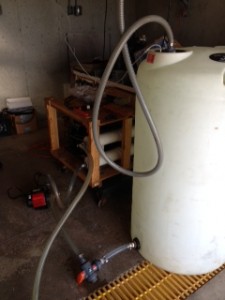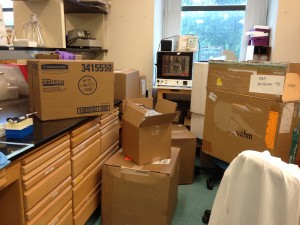We had an extremely successful teacher/scientist workshop in Kansas July 16-17th. The participating Kansas High School teachers were very enthusiastic and receptive to Project PARKA. They teach at a combination of both rural and urban schools all over the state of Kansas. Of the 22 educators participating, 21 teach various courses in biology, chemistry, and environmental sciences. The one English teacher participating, A. Moon-Bradley, will oversee a project-related blog written by her students. Please check out their blogs (coming soon) on this website! They all worked really hard during the 2-day workshop to learn about the science background of the project and to go through each of the 4 lesson plans that they will bring back to their students this Fall.
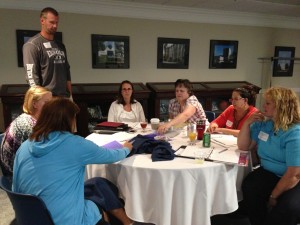
The teachers learned a lot of background information about oceanography, Antarctic food webs, climate change, and ocean acidification. Here they are having a group discussion about how ocean acidification affects marine organisms. Photo by Grace Saba
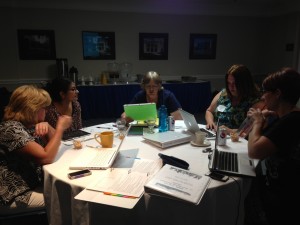
Teachers worked in groups to learn the lesson plans they will soon be teaching their students. Photo by Grace Saba
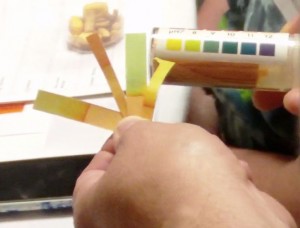
Teachers checking pH of different solutions as part of the ocean acidification lesson plan. Photo by Grace Saba
The participants of the workshop (and the overall Project PARKA program) included myself, Kristin Hunter-Thomson (Rutgers COSEE NOW outreach coordinator), and the following Kansas teachers:
S. Borjon, Shawnee Heights High School
C. Cochran, Mission Valley High School
K. Denham, Veritas Christian School
S. Elangikal, Topeka High School
W. Elkins, University of Kansas
C. Ferree, Emporia High School
D. Finch, Council Grove High School
K. Gaines, Topeka High School
J. Hamilton, Silver Lake High School
M. Henderson, Burlingame High School
L. Houston, Fort Scott High School
R. Hutson, Blue Valley High School
M. Laughlin, Valley Heights Junior Senior High School
E. Meredith, Hayden Catholic High School
A. Moon-Bradley, Marais des Cygnes Valley High School
S. Nicholson, Quinter High School
J. Parker, Pawnee Heights High School
D. Rice, Marais des Cygnes Valley High School
B. Roper, Shawnee Heights High School
S. Scoggin, Marais des Cygnes Valley High School
A. Stinebaugh, Central Heights High School
F. Wecker, Emporia High School
In addition to the lesson plans, our science team will be doing live calls from Palmer Station to the participating Kansas High School classrooms during our field season in January 2014. The students will take what they learn from the lesson plans and the live discussions with scientists to conduct independent laboratory projects, which they will present to each other and the scientists at the Student Symposium in April 2014.
